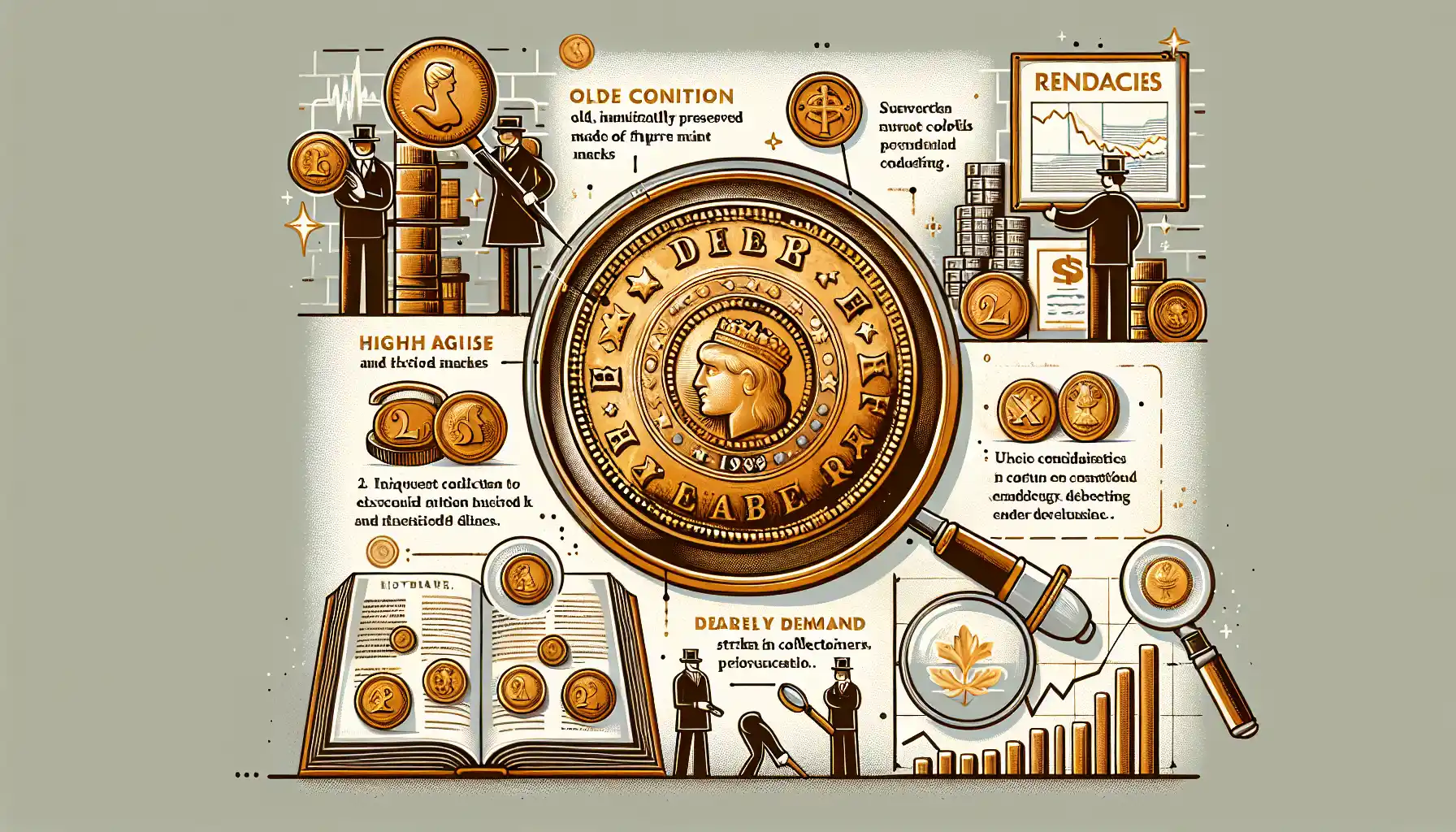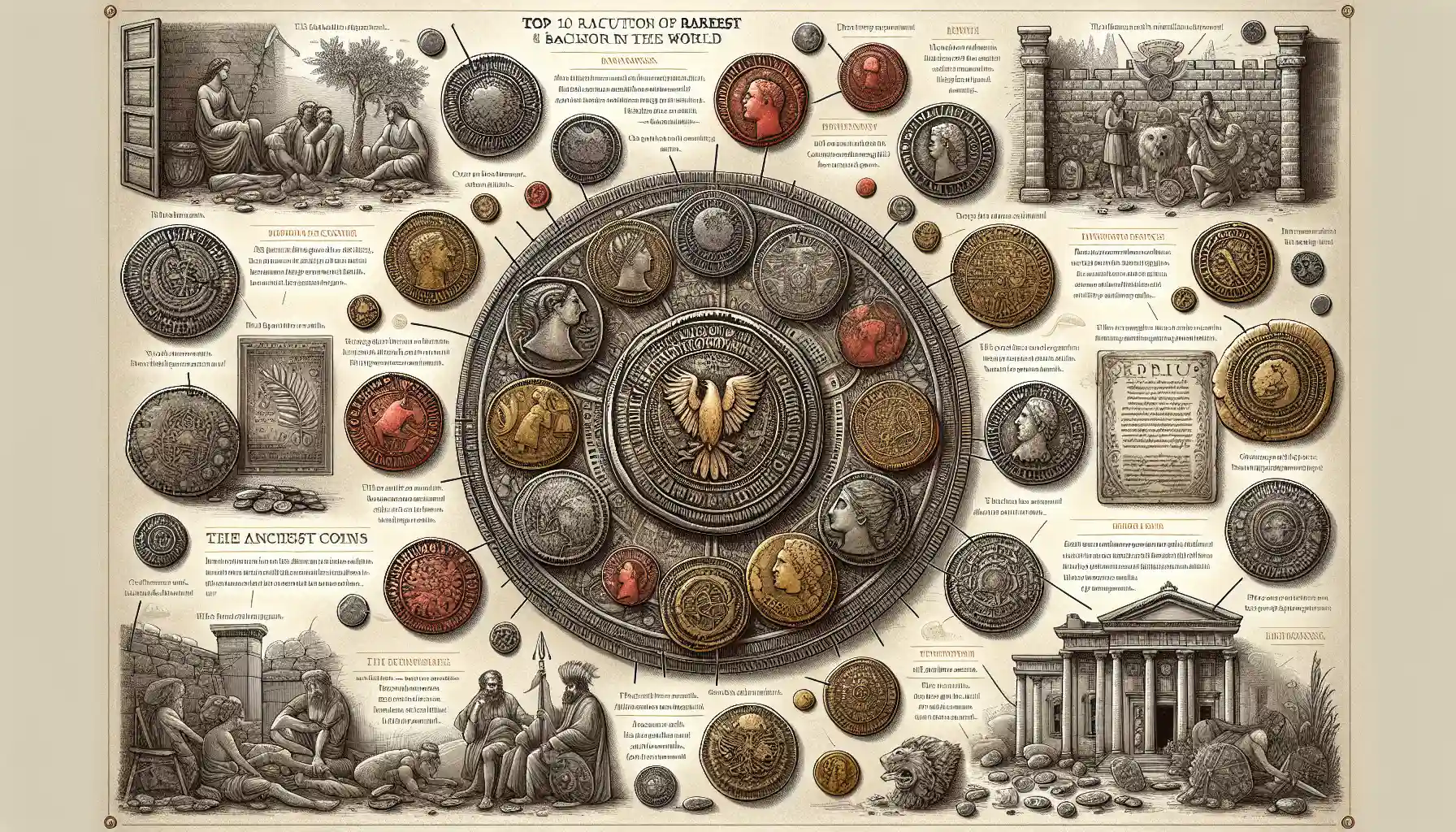Top 10 Rarest Coins in the World and Their Fascinating Histories
Introduction to the World's Rarest Coins
The Allure of Rarity: Coins That Defy the Odds
Have you ever held history in the palm of your hand? Imagine a coin so rare, its very existence feels like a whispered legend. These aren’t just collectibles—they’re time machines, each with a story that could rival any epic novel. From accidental minting errors to coins that have survived wars and upheavals, these treasures are as much about human drama as they are about metal and design.
Let’s take the legendary
Flowing Hair Silver Dollar (1794), for instance. Picture this: it was one of the very first silver dollars minted by the young United States, a symbol of a fledgling nation's ambition. Or the elusive
1933 Double Eagle, a gold coin so coveted it’s been the star of court battles and international intrigue.
Some of these coins owe their rarity to sheer chance:
- A printing mistake that turned the 1943 Bronze Lincoln Cent into an unexpected marvel.
- Or the surviving handful of Edward III Florins, gleaming like medieval jewels.
Owning one of these is like holding lightning in a bottle—rare, electric, and utterly unforgettable.
Factors That Make Coins Rare and Valuable

What Truly Sets a Coin Apart?
Have you ever held a coin and wondered what secrets it might whisper if it could speak? The value of a rare coin often lies in an intoxicating cocktail of history, beauty, and sheer improbability. But what truly makes a coin extraordinary?
Let’s dive into the magic:
- Mintage Numbers: Coins with tiny production runs are like the unicorns of numismatics—rare and highly coveted.
- Condition: A pristine, untouched coin is the Holy Grail for collectors. Even the smallest scratch can impact its worth.
- Historical Significance: Some coins were struck during turbulent times or commemorate pivotal events, making them living pieces of history.
Imagine holding a coin that survived a shipwreck or one minted by an emperor desperate to leave his mark on the world. These aren’t just objects—they’re portals to another time, often passed through countless hands before reaching yours.
So, whether it’s a misprint, a limited release, or a quirky design flaw, the factors that make coins rare are as diverse and fascinating as the stories they carry.
The Stories Behind the Top 10 Rarest Coins

The Enigmatic Tale of the 1933 Double Eagle
Imagine holding a piece of history so rare, it’s whispered about in collector circles like a mythical treasure. That’s the allure of the
1933 Double Eagle. This coin isn’t just rare—it’s a rebel with a fascinating backstory.
Minted during the throes of the Great Depression, these $20 gold coins were never meant to see the light of day. Franklin D. Roosevelt, in a dramatic twist of fate, outlawed private gold ownership, and the freshly minted coins were ordered to be melted down. But here’s where the story takes a sharp turn: a few coins escaped destruction, slipping into private hands like an unsanctioned work of art.
One of these surviving pieces became the stuff of legend. In 2002, a
1933 Double Eagle sold for a jaw-dropping $7.6 million at auction. Why? Because owning one is like holding a forbidden relic—legal battles, secret dealings, and even a confiscation by the U.S. Secret Service have surrounded this coin.
For collectors, it’s not just a coin; it’s a symbol of defiance, survival, and mystery wrapped in gold.
Tips for Collectors: How to Identify Rare Coins

Unlocking the Secrets of Rare Coins
Collecting rare coins is like embarking on a treasure hunt where every find tells a story. But how do you separate the true gems from the imposters? It's all in the details—and trust me, those tiny details can make or break your discovery.
First, examine the coin's
mint mark. This little symbol holds the key to where and when the coin was struck. For example, a U.S. coin with an "S" mark hails from San Francisco, but not all mint marks are created equal—some are exceedingly rare. Next, pay close attention to the
condition. Coins in pristine condition (graded as MS-65 or higher) are like untouched masterpieces and fetch significantly higher values.
When in doubt, use these tips:
- Check for errors: Misprints or double strikes can transform an ordinary coin into a jackpot find.
- Look for low mintage numbers: The fewer coins produced, the rarer the piece.
Remember, rare coins don’t shout their value—they whisper it through subtle quirks. Keep your magnifying glass handy, and let your curiosity lead the way!
Conclusion and Future Trends in Coin Collecting

A Journey Through Time: The Stories Behind These Rare Coins
Imagine holding a piece of history in your hand—a coin so rare that it feels like treasure plucked from the pages of an adventure novel. These coins aren’t just money; they’re whispers from the past, each with its own gripping story. Take the legendary
1933 Double Eagle, for instance. This $20 gold coin was never meant to see the light of day—most were melted down during the Great Depression. But a handful survived, and one even sold for over
$18.9 million! Can you believe that? It’s not just a coin—it’s a survivor.
And then there’s the enigmatic
Flowing Hair Silver Dollar from 1794, widely believed to be the very first silver dollar minted by the United States. Its intricate design and historical significance make it a crown jewel for collectors.
Want more jaw-droppers? Here are a couple that’ll make any enthusiast’s heart race:
- Edward III Florin (1343): A medieval masterpiece worth millions today.
- Brasher Doubloon (1787): A gold coin handcrafted by a New York silversmith—truly one of a kind.
These coins aren’t just currency—they’re gateways to another era. Which one sparks your imagination?





